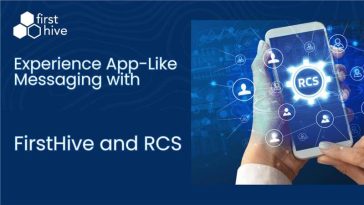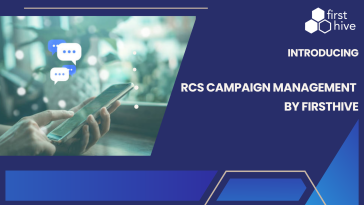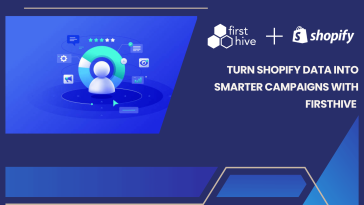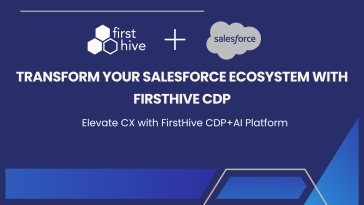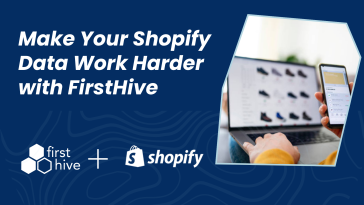CRM, ERP, Accounting systems, Data Banks, Website, Apps, and this list can go on until every single data source used by a marketer could be added. It is not just the variety of sources that are required by a marketer but also the frequency of data access, data refresh, enrichment process that occur at different intervals on different systems. CDPs master the art of making this complex and intertwined data communication system into an automated and seamless data stream.
Data Ingestion is a fundamental, yet indispensable and imperative capability that a CDP brings along. Before, we dig deep into what exactly your CDP’s data ingestion process includes, you would find it valuable to discover its real contribution to your business.
Data Ingestion Adding Business Value
Our customers have experienced some or all of the benefits with the implementation of a customer data platform. These advantages are unique to each industry sector.
- Identifying anonymous, unique, and existing customers; distinguishing them for better cohort management and targeted marketing.
- Assigning a unique ID to each customer and mapping their customer journey for a marketer, driving more efficient loyalty programs.
- Automate analysis and campaign management for optimized cost and ad management.
- Enrich data for ongoing campaign management for better lead nurturing and retention activity
- Break silos by connecting data sources to the CDP for a single view of the customer. Enabling personalized communication and brand affinity.
- Access to first-hand customer data, leading to better upsell and retention campaigns for better Lifetime value (LTV) and Return on Investment (ROI).
- Increase the visibility of in-store traffic improving the cart abandonment rate.
Data Ingestion
Data ingestion is not a single-step process. It involves multiple stages of sourcing data into the CDP. Understanding each stage helps you evaluate your purchase decision of CDP. More about a criteria checklist that helps you in the decision of purchase and choice of a CDP vendor is available here.
Data Loading
Data loading is an initial step where a list of marketing data sources is collated. To create this list, you need to understand different types of data sources that are available and in use. Further, figure out if your customer data platform supports these sources.
Data loading occurs is primarily in three methods. CDPs use APIs to load data or use Comma Separated Value, XML, database tables, etc. In either of these cases data loading can be regulated and automated. The third option used involves the use of queries to extract data. You can apply your own rules and customize the data loading process to enable seamless categorization and data organization.
Here is the list.
Internal Data Sources: These include all the internal data systems that are used by different teams across the organization. This segment includes website, e-commerce, mobile apps, retail point of sale, sales automation, customer support, order processing, billing, and loyalty programs. These sources provide ‘first-party data’ that is further organized in your CDP. Enterprise CDPs can support large sets of internal data sources. And, typically a simple toggle on the interface would begin data ingestion process. But, some of them would need an API for the process to initiate.
External Data Sources: To collate secondary and tertiary data, external data sources are required. But, to access them can get challenging. Accessing external sources involves dealing with data and access restrictions. Evolved CDPs either partner with data generating systems, using a pre-configured integration or use a trusted agent to draw data. Efficient CDPs ensure real-time access, avoid data loss, and reduce lag time. Such data is useful to generate influencer marketing programs and loyalty programs.
Trackings IDs and Tags: For most analytics geeks, these form the basis for extracting user behavior and customer data into the internal systems. This requires the CDP to be efficient in tag management. Apart from adding Javascript codes, you should also be able to add, configure, and remove other tags. The classification of data at this stage also helps in setting up data controls.
Software Development Kits (SDKs): With IoT on the play and devices gaining mobility, SDKs become a crucial data source for marketers. Find out from your CDP vendor how easy or difficult it is to include SDKs into the CDP. Easy processes empower marketers and provide the benefit of escaping the hassle of upgrading technical skills.
Webspiders: As much as individual data is important, gathering associated company data is equally crucial. Gathering data from external websites and social media sites requires the CDP to have advanced sourcing and processing capabilities. Such data further helps in data enrichment which can boost Account-Based Marketing campaigns.
Data loading can also be administered using federated or external access. However, your CDP should have the necessary capabilities to cleanse and organize such data.
Data structure
Data cannot be put to use if it is not readable, searchable, and comprehensible. Data structure helps in storing, categorizing, classifying, and disseminating information. A CDP can store conventional data with standard and structured elements such as customer name, email IDs, transaction dates, and so on. But, the new-age enterprise CDPs can store unstructured data in diverse formats such as weblogs, images, videos, audio files and many more. This is achieved with intense metadata creation and management supported by advanced techniques such as artificial intelligence, image recognition, etc.
Schema & Schemaless Ingestion: While the conventional data is stored in the schema, the unstructured data can be accessed with ease using schemaless ingestion. A combination of the two is implemented to allow hybrid results in retrieving and accessing data. To track the value that comes out relationships between data, schema ingestion is best. A layer of it to the schemaless ingestion allows drawing such relationship with unstructured data in a seamless form.
Integrated Orchestration: To support highly targeted and integrated customer journey orchestration, CDPs perform cohort segmentation. Attributing structured data to each customer ID is the simple part. But, CDPs that provide you the edge also map inputs that are unstructured. They map behavior, trends, and other such qualitative aspects during segmentation. This also means drawing input from different sources, efficient CDP maps it back to relevant sections for a marketer. For instance, FirstHive has implemented dynamic profile segmentation and auto-segmentation with a layer of artificial intelligence.
Data Compliance: Regulatory compliance from different countries require data to be stored in a safe manner in the interest of the customers. CDPs should be designed to provide encrypted data that does not threaten the security and privacy of your customers. This includes passwords, transaction details, and other sensitive customer data.
Data ingestion includes extracting data from and into different formats and stacks it back into relevant formats for a marketer’s immediate use; use in real-time.
Real-time Data
Marketers want to communicate and engage with the customer in real-time. This also sets a threshold for marketers to receive real-time data to enable real-time interaction. Customer Data Platforms need to manage a few aspects to ensure the best performance during every customer interaction.
To ensure real-time data, CDPs need to be designed to support latency, response time, and scalability that arises with the volume of data.
CDPs come with dextrous capabilities. But, to optimize on your needs to discuss with the vendor about what you a customer data platform can offer to your business, exclusively.



